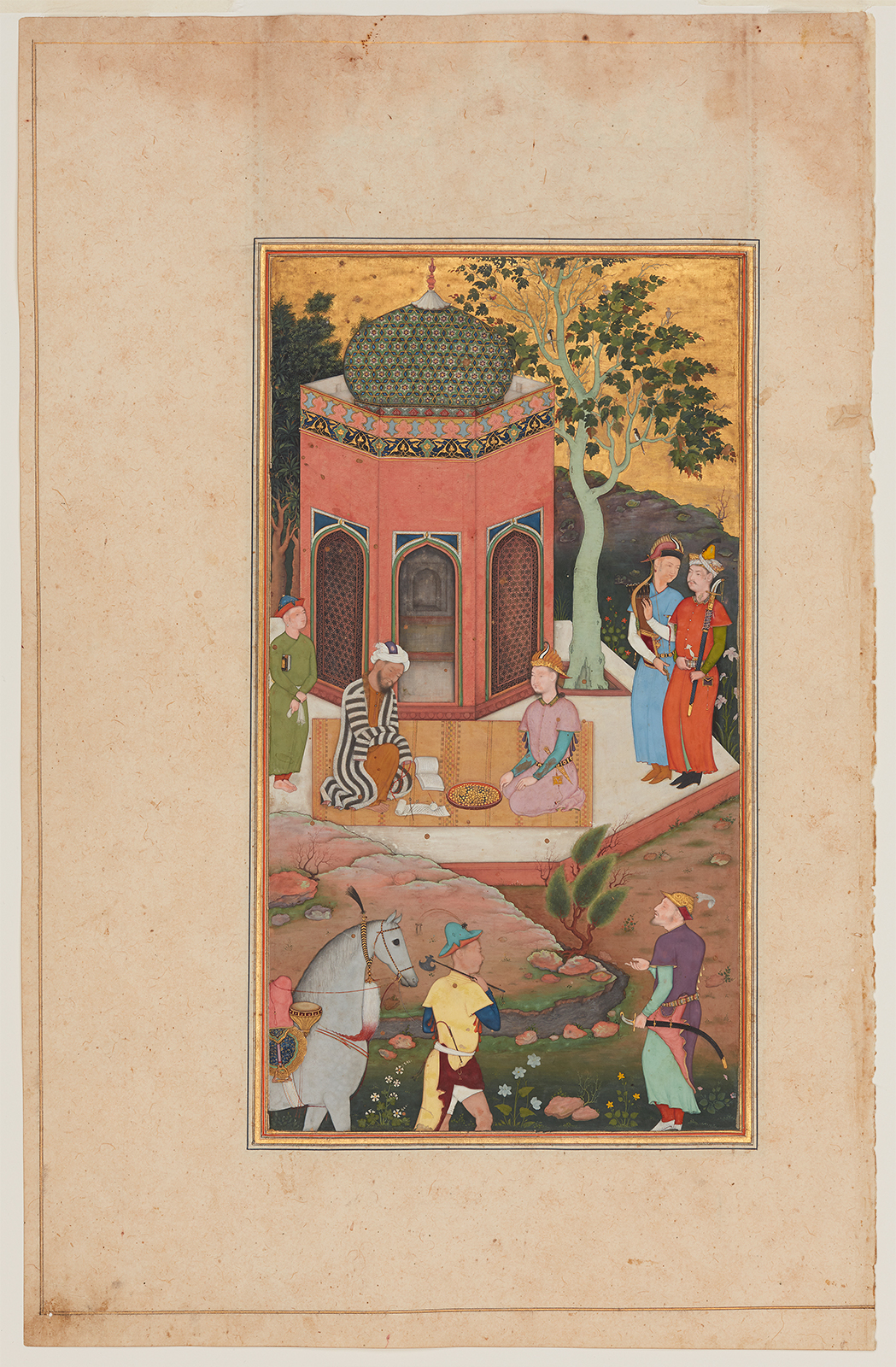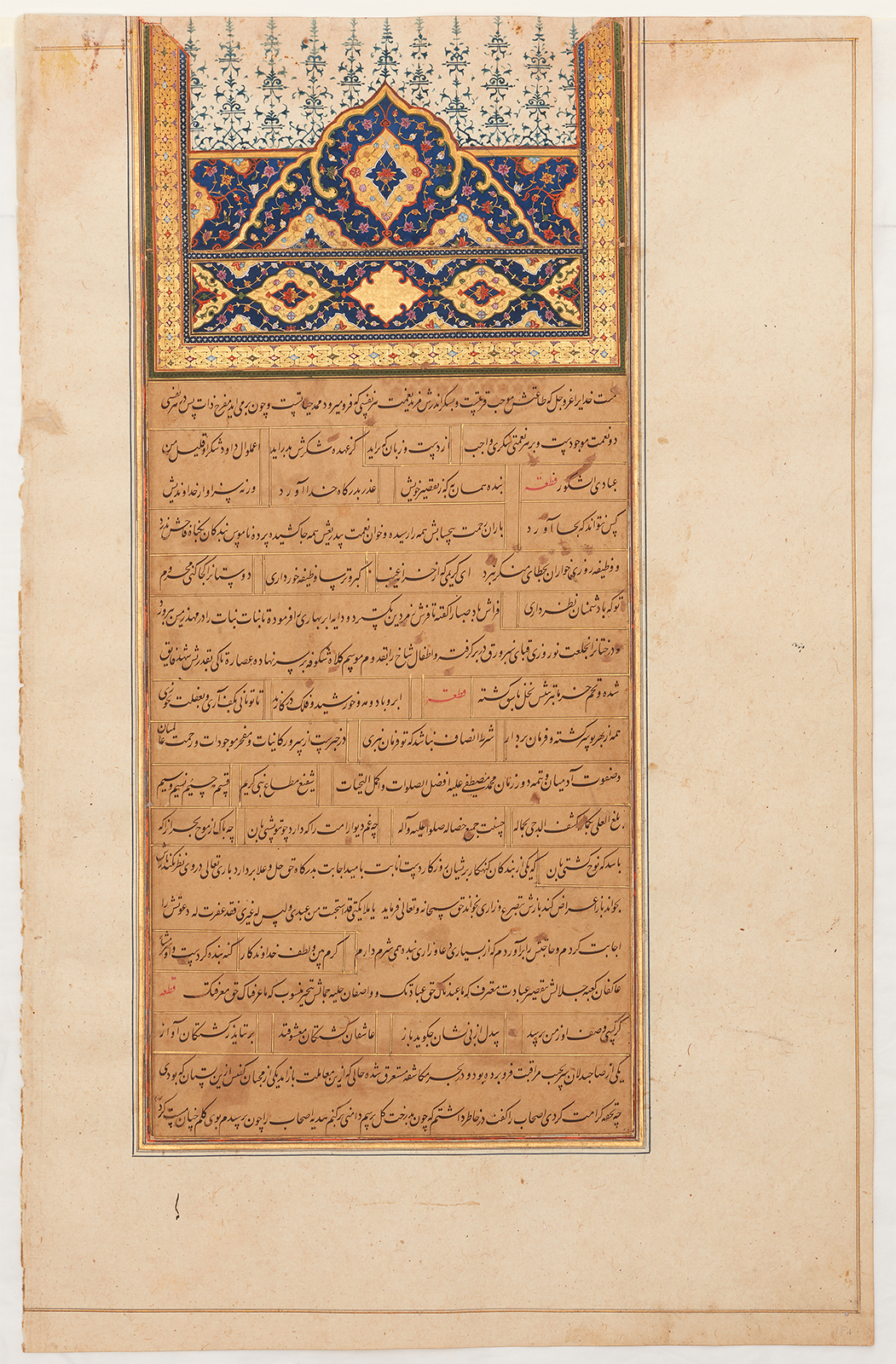Click on the image to zoom
Sa`di and His Dedicatee Abu Bakr b. Sa`d b. Zangi
Folio from the Manuscript of Kulliyat (Collected Works) of Sa`di (d. 1292)
- Accession Number:AKM284.15
- Creator:attributed to Aqa Riza Jahangiri
- Place:India, Agra
- Dimensions:41.8 x 26.2 cm
- Date:ca. 1604
- Materials and Technique:opaque watercolour, ink, and gold on paper
Appearing after the Bustan’s final page of text, this painting does not play a role in that poem’s narration, nor does it relate to the painting AKM284.14, which it faces. It might have been placed to mark the central point in the manuscript, or it might be a later addition altogether. On the reverse of the folio the text of the Gulistan begins, suggesting that this painting may have been completed on the blank page that has been left between sections in other parts of the manuscript.
See AKM284 for an introduction to the Kulliyat (Collected Works) of Sa'di, and other paintings from this manuscript.
Further Reading
The painting depicts the pious Sa`di with his prayer beads, book, pen and paper. He is seated with Abu Bakr ibn Sa`d ibn Zangi, the patron who is eulogized at the beginning of both the Bustan and the Gulistan. Through a skilful combination of tribute and alliance, this ruler of southern Iran had protected Sa`di’s beloved city of Shiraz from the Mongol incursions of the mid-13th century. He had also financially supported the poet, as the tray of gold coins between them indicates. Though not a Mongol, Abu Bakr wears Mongol headgear that identifies him as an ally of the invaders.
The painting has been attributed to Aqa Riza Jahangiri and is marked as page 180 in the manuscript.
— Marika Sardar
Note: This online resource is reviewed and updated on an ongoing basis. We are committed to improving this information and will revise and update knowledge about this object as it becomes available.




